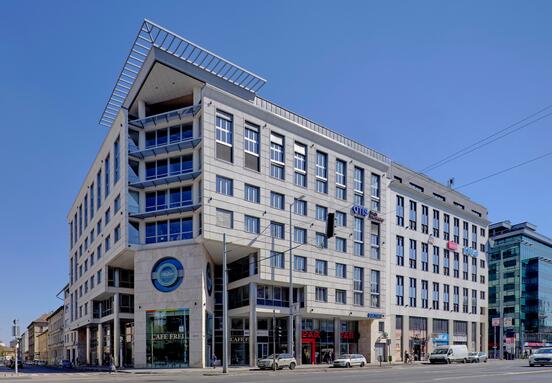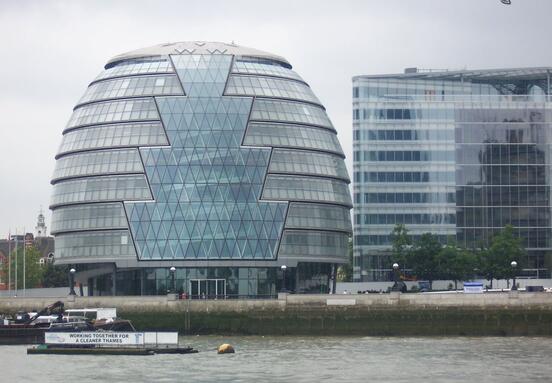On the basis of current data developers’ activity is going to be more moderate compared to the year of 2016 and to previous expectations.
Ongoing property developments make up around 400 square metre office space, the major part of which (316 thousand square metre) is expected to be handed over only in 2018. Two hotspots of property development are the office corridor on Váci Street and sub market in south Buda. The dominance of Váci Street is expected to continue its growth in the near future, the size of handed over modern office stock of the region is going to surpass one million square metres by the end of next year. In the south Buda submarket, which with 3% has the lowest vacancy rate, completion of new offices (over 110 thousand square metres) can be expected a year later, in 2019.
The two biggest handovers in the second half of this year are going to take place in the south Buda submarket (Office Garden 3 and Hungarian Nobel prize winners Research and Development Park I); 42 thousand square meters of office space are going to be handed over in the two office buildings, which account for more than half of the annual growth in demand.
Tenants waiting for new opportunities
In the January-June period there was a significant, 22% decrease in the volume of office leases, compared to the data last year. The fall in demand can be explained by the shrinking supply: since the average vacancy rate has been decreasing continuously, it is becoming more and more difficult to find suitable, big, contiguous offices.
There is still a steady demand for office buildings under construction: the volume of prelease agreements has quadrupled compared to the volume of last year (agreements for around 25,500 square metres have been signed).
About half of the prelease agreements (more than 12 thousand square metres) were closed in the Office Garden 3 of south Buda, about two thirds of the area in the new building was leased in the January – June period.
Net demand has not changed significantly compared to last year’s data, new contracts, area expansions, and prelease agreements cover an area of 115 thousand square metres. The ratio of net demand is still high within the total demand (70%).
In the first half of the year three contracts were made about office areas bigger than 5,000 square meters (two lease extension and a new agreement), two of which were drawn on Váci street region and the third one in the south Buda region.
In the office market sector a big demand can be seen for the Váci street office corridor and for the south Buda region: half of the total demand was aimed at these regions in the first half of 2017. This trend can be explained by the fact that the Váci street submarket has the biggest stock (828 thousand square metres), furthermore most of the vacant offices can be found here (around 75 thousand square metres).
The average size of the leased areas has not changed significantly (it has decreased from 516 square metres to 499 square metres within a year). The average transaction size is expected to grow again with the dynamic expansion of the new supply
Again: record low vacancy rate
The stock of leased office area has grown since the beginning of 2013 in every half a year, therefore net market absorption has been positive. The stock of occupied office area has grown by about 27 thousand square metres in the first half of 2017, the average vacancy rate characteristic of the market dropped to a record low level, below 9%. Practically there are no more vacant areas in the south Buda submarket: here the vacancy rate is only 3.1%. Rental fees have grown steadily in the past few months, while the average fee interval characteristic for A category properties is between 11-14.6 EUR/m². Investors expect a yield of around 6.7-7%, whereas in case of certain premium properties the yield rate is below 6%.
An upsurge in expansion can be expected
The annual volume of office handovers is not going to reach the expected level in 2017, thus 76 thousand square metres will be on the market instead of the 100 thousand square metres that was expected. According to our estimates this figure will be significantly bigger in 2018. If developers are able to keep the earlier set schedule despite shrinking capacity in the construction industry and increasing prices, modern stock might expand by 386 thousand square metres by the end of next year. The Váci street office corridor continues to be the most important submarket of the office market, here more than 150 thousand square metres of office space is planned to be handed over in the next one and a half years. The accessibility of the location popular among tenants is becoming worse temporarily – at a time when supply is expanding dynamically and new tenants are moving in – as a result of the renovation of Metro line 3. The demand for Váci street offices is not foreseen to decrease in spite of the metro line renovation. According to our forecast demand is going to grow in the second half of the year, therefore the vacancy rate shows a slightly decreasing tendency.
Eston








